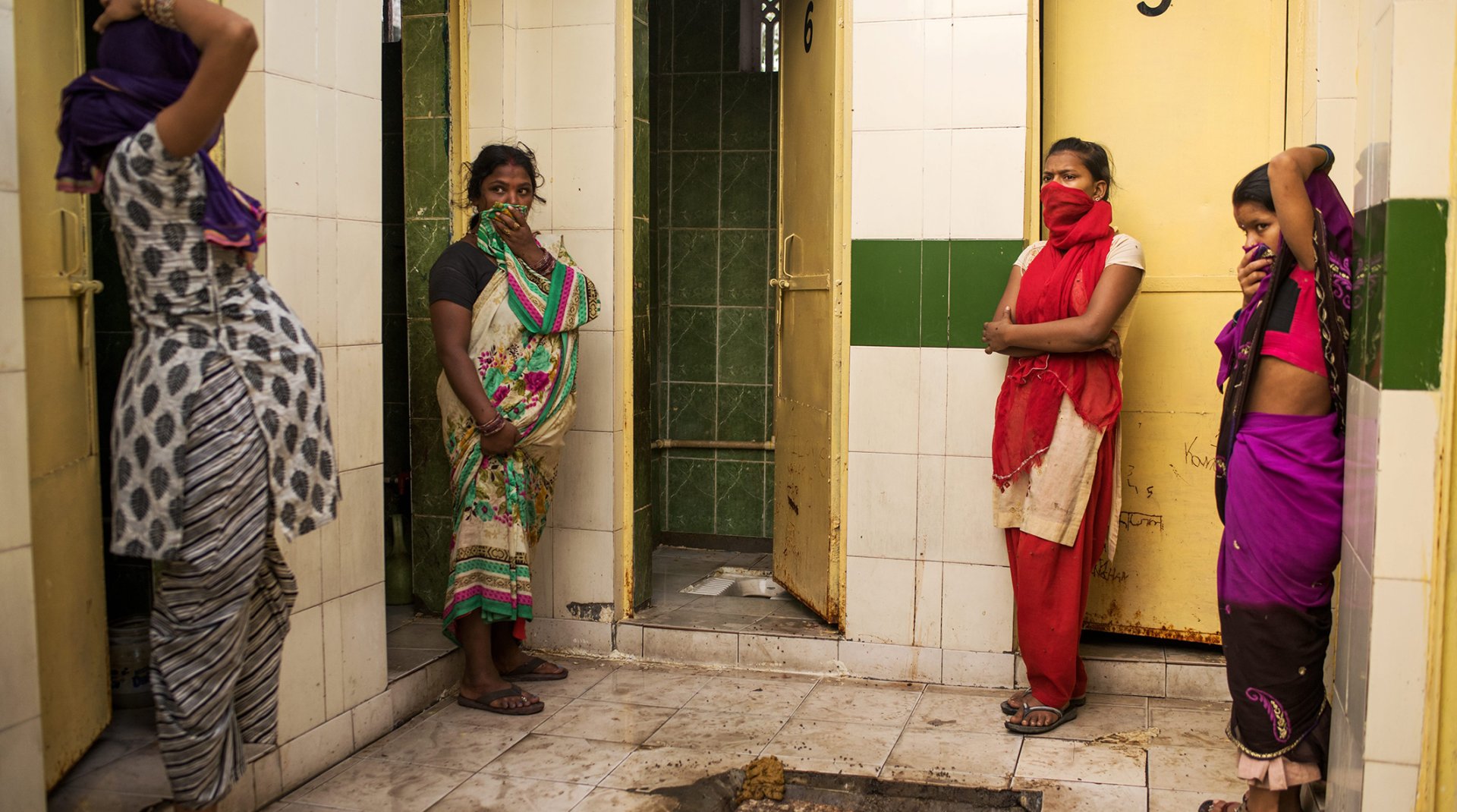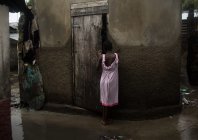
A Place to Go: Sanitation and Open Defecation
Andrea Bruce
NOOR Images pour National Geographic Magazine
Defecating in the open is as old as humankind, and as long as population densities were low and the earth could safely absorb human waste, this caused few problems. But with more people in towns and cities, the link between hygiene and health has become clear, as has, in particular, the importance of avoiding contact with feces.
Nearly 950 million people still routinely practice open defecation, and 569 million of them live in India; and the evidence can readily be found when walking along train tracks or rural roads.
Disease caused by poor sanitation and unsafe water kills 1.4 million children a year, more than measles, malaria, and AIDS combined. In 2015 the United Nations called for an end to open defecation (under number six of the Sustainable Development Goals to be achieved by 2030), and it is indeed possible to make considerable progress.
Such progress would also help alleviate poverty and hunger, and improve education, as sick children miss school, as do menstruating girls at schools with no clean, proper toilet facilities.
India was grappling with the problem even before independence in 1947. “Sanitation is more important than independence,” said Mahatma Gandhi who urged his compatriots to clean up their act.
And to some extent they have: the percentage of Indians defecating in the open has declined substantially over recent decades, but with rapid population growth, census statistics show that a majority of Indians now live in areas with greater, not less, exposure to human feces.
Preview



The health toll in India is staggering: every year, diarrheal diseases kill more than 300,000 children, and millions of people live with chronic intestinal disease, limiting the ability to absorb nutrients and medication. The cycle of hardship goes even further, with underweight women giving birth to underweight babies who are then more vulnerable to infection and gain less benefit from vaccination, and are more likely to be stunted. In 2016, nearly 40% of Indian children under the age of five were stunted.
In Haiti, the death toll from the combination of natural disasters, open defecation and cholera has been very high. After the 2010 earthquake and after Hurricane Matthew in 2016, feces contaminated rivers and took cholera to areas difficult for health care workers to reach.
More than half the population of Haiti does not have a private, hygienic place to defecate. There are few proper sanitation facilities, even in the capital Port-au-Prince.
Men like Exilien Cenat are the unsung heroes of the sanitation system. Exilien is a “bayakou,” one of the manual laborers who work at night to avoid public ridicule, emptying pit latrines, often stripping off to spare their clothes. He works by hand using a bucket to collect waste, transferring it to bags then dumping them in ditches or canals. A sewer system would be a hygienic solution, but it is simply too expensive.
There are other options, such as the composting toilet service provided by SOIL (Sustainable Organic Integrated Livelihoods): every week compostable raw material is delivered, and full buckets collected. The mixture of feces and compost is taken to a farming center where it is processed to make fertilized soil for local farmers, but for the moment this is only a small-scale operation.
Andrea Bruce
Exhibition co-produced with Veolia



